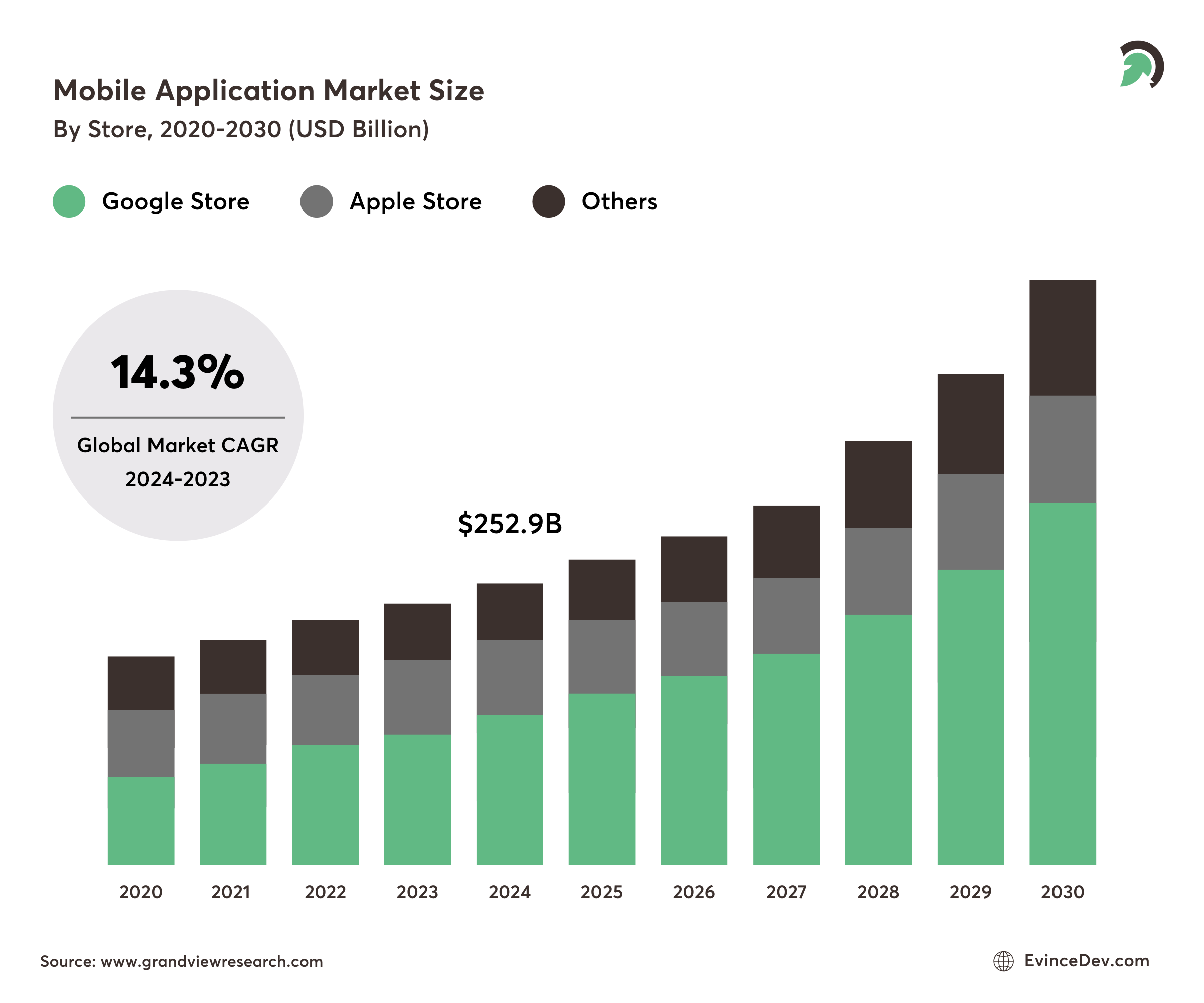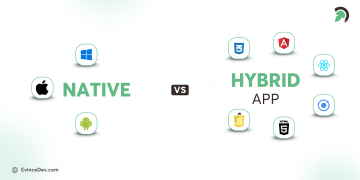In today’s digital age, mobile apps are indispensable in our daily lives. From social media platforms to business solutions, entertainment, and beyond, mobile applications empower various industries. However, the frontend, the user-facing part of an app, doesn’t function alone. A strong, reliable, and efficient backend infrastructure is critical to ensure mobile apps perform well, scale efficiently, and provide a seamless user experience. This blog delves into the intricacies of mobile app backend development, offering a comprehensive look at what goes into building the backbone of modern mobile applications.
What is Mobile App Backend Development?
At its core, backend development involves the server-side components of an application, which work behind the scenes to manage and facilitate data exchange between the user interface (frontend) and the databases, servers, and other resources. Simply put, the backend is responsible for ensuring that mobile apps function smoothly, retrieve data, and carry out operations necessary to meet user needs.
According to Grand View Research, the global mobile application market was valued at USD 252.89 billion in 2023 and is projected to grow at a CAGR of 14.3% from 2024 to 2030.

The backend encompasses several key elements:
- Databases: Store user information, application data, and media files.
- Servers: Handle requests from the app and send data back.
- APIs: Act as intermediaries that allow the frontend to communicate with the backend.
- Authentication: Verifying user credentials to ensure secure access.
- Business Logic: Application rules that control data flow and functionality.
Key Components of Mobile App Backend
To fully understand mobile app backend development, it’s essential to break down its core components:
Server
The server plays a central role in mobile backend architecture. It manages requests from mobile devices (client-side), processes them, and sends the necessary responses. Servers can be either physical machines or virtual cloud servers, with cloud hosting being the preferred option due to its scalability and reliability.
Database
Databases store critical information, such as user profiles, transaction data, and application content. There are two main types of databases used:
- SQL (Structured Query Language): These relational databases (e.g., MySQL, PostgreSQL) are ideal for structured data with clear relationships.
- NoSQL: Non-relational databases (e.g., MongoDB, Cassandra) are used for unstructured or semi-structured data and are known for their flexibility and scalability.
API (Application Programming Interface)
APIs are the connectors between the mobile app’s frontend and backend. APIs define how data is exchanged between the two, ensuring secure and efficient communication. Popular API protocols include:
- REST (Representational State Transfer): A stateless, lightweight architecture that is highly scalable and widely used.
- GraphQL: A newer API protocol that allows clients to query only the data they need, offering more flexibility.
Authentication and Authorization
Mobile apps often need to verify a user’s identity before providing access to sensitive data or features. This process is known as authentication. Two common methods include:
- OAuth: A popular open standard for access delegation, allowing users to log in via third-party services.
- JWT (JSON Web Tokens): A compact, URL-safe way to represent claims between two parties, commonly used in token-based authentication.
Types of Mobile App Backends
When it comes to choosing a backend solution, developers and businesses typically consider the following options:
Custom Backend
A custom backend refers to a backend developed specifically for the mobile app, using a programming language and framework tailored to the app’s needs. While this approach provides full control over the backend infrastructure, it requires more time and resources to build, test, and maintain.
Advantages:
- Flexibility and full customization.
- Optimal scalability tailored to the app’s unique requirements.
- Fine-grained control over security and performance.
Use Case:
- Large-scale enterprise applications, social networking platforms.
Backend-as-a-Service (BaaS)
BaaS platforms provide pre-built backend services that developers can integrate into their apps with minimal setup. These platforms offer ready-made backend solutions, including authentication, databases, cloud storage, and push notifications.
Popular BaaS platforms:
- Firebase: A platform by Google offering cloud storage, real-time databases, and analytics.
- AWS Amplify: Amazon’s cloud service for building scalable and secure mobile app backends.
Advantages:
- Faster development and deployment.
- Built-in scalability.
- Reduced overhead in maintaining server infrastructure.
Use Case:
Startups, small to medium-sized apps, MVPs.
Serverless Architecture
Serverless computing allows developers to write backend logic without managing servers. Cloud providers handle infrastructure, automatically scaling as necessary. Serverless functions are event-driven and can be executed on-demand, making it highly cost-efficient.
Popular serverless platforms:
- AWS Lambda
- Google Cloud Functions
Advantages:
- Lower cost (pay only for execution time).
- Scalability and high availability.
- Reduced infrastructure management.
Use Case:
Real-time applications, event-driven apps, and microservices.
Technologies and Tools for Mobile App Backend Development
A robust backend is built using a combination of programming languages, frameworks, and tools. Here’s a look at the technologies that power backend development for mobile apps:
Programming Languages
The choice of backend programming language depends on the developer’s familiarity, app requirements, and scalability needs. Common backend languages include:
- Node.js (JavaScript): Popular for real-time applications, high concurrency, and non-blocking I/O operations.
- Python: Known for its simplicity and flexibility, ideal for data-driven apps and AI-powered applications.
- Ruby: A dynamic language commonly used with the Ruby on Rails framework for rapid web development.
- Java: A widely-used, platform-independent language, preferred for enterprise-level applications.
- Go: Known for its simplicity and performance, particularly in distributed systems.
Frameworks
Frameworks help streamline backend development by providing ready-to-use structures and functionalities:
- Express.js: A minimal, flexible Node.js web application framework used for building APIs.
- Django: A high-level Python framework for building scalable web applications.
- Flask: A lightweight Python framework ideal for microservices.
- Spring Boot: A Java framework that simplifies the development of stand-alone, production-grade applications.
Cloud Platforms
Many mobile app backends are hosted on cloud platforms due to their scalability, security, and flexibility. Leading cloud platforms include:
- Amazon Web Services (AWS)
- Google Cloud Platform (GCP)
- Microsoft Azure
These platforms offer managed services for hosting, storage, security, and database management, ensuring high availability and reliability for mobile apps.

Security Considerations in Mobile App Backend Development
Security is a top priority when developing any mobile app backend, especially since they handle sensitive user data. Here’s how developers can ensure that their backends are secure:
- Encryption: Use SSL/TLS protocols to encrypt data transmitted between the app and the backend server, protecting it from eavesdropping and tampering.
- User Authentication: Secure authentication methods like OAuth, JWT, and multi-factor authentication (MFA) can safeguard user accounts from unauthorized access.
- Input Validation: Prevent common security vulnerabilities like SQL injection by validating and sanitizing user input.
- Data Storage Security: Ensure that sensitive data such as passwords and personal information is stored securely in databases using encryption techniques.
- DDoS Protection: Utilize rate limiting, firewall protections, and load balancing to protect the backend from distributed denial-of-service (DDoS) attacks.
Performance Optimization for Mobile App Backend
The performance of a mobile app depends significantly on the efficiency of the backend. Here are a few strategies to enhance backend performance:
- Caching: Storing frequently accessed data in memory (e.g., using Redis or Memcached) can reduce database load and speed up response times.
- Load Balancing: Distribute traffic across multiple servers to prevent overloading and ensure availability.
- Database Optimization: Use indexing, query optimization, and database partitioning to improve data retrieval speeds.
- Compression: Compress response data to reduce payload sizes and minimize network latency.
Scalability and Flexibility in Mobile App Backend
A mobile app’s success often depends on its ability to scale as user demand grows. Here’s how backend developers ensure scalability:
- Horizontal Scaling: Adding more servers to handle increased load.
- Vertical Scaling: Increasing server capacity (e.g., upgrading CPU, RAM).
- Cloud Hosting: Cloud platforms like AWS and GCP offer auto-scaling features, which allow the backend to automatically adjust to traffic spikes.
- Microservices Architecture: Decoupling app components into microservices allows independent scaling of parts of the system based on demand.
Challenges in Mobile App Backend Development
While mobile app backend development offers several benefits, it also comes with challenges:
- Complexity: Building a scalable and secure backend requires deep technical knowledge and understanding of distributed systems.
- Data Privacy: Ensuring compliance with data privacy regulations (such as GDPR) while handling user data.
- Maintaining Performance: As apps grow, maintaining high performance without downtime or slowdowns can be a significant challenge.
- Integration: Integrating third-party services, APIs, and external data sources into the backend requires careful management to avoid compatibility issues.
Strengthening Mobile App Backends with EvinceDev
Mobile app backend development is an essential aspect of the software development lifecycle. From securing user data to enabling real-time communication and scaling with user growth, a strong backend infrastructure ensures that mobile apps perform efficiently and securely. Whether opting for custom backends, leveraging BaaS platforms, or adopting serverless architecture, developers must prioritize flexibility, security, and scalability to meet the demands of modern mobile app users.
With the expertise and experience of EvinceDev, businesses can create powerful, scalable, and secure mobile app backends tailored to their specific needs. By staying updated on the latest technologies, tools, and best practices in backend development, developers can build robust mobile apps that deliver exceptional user experiences.




